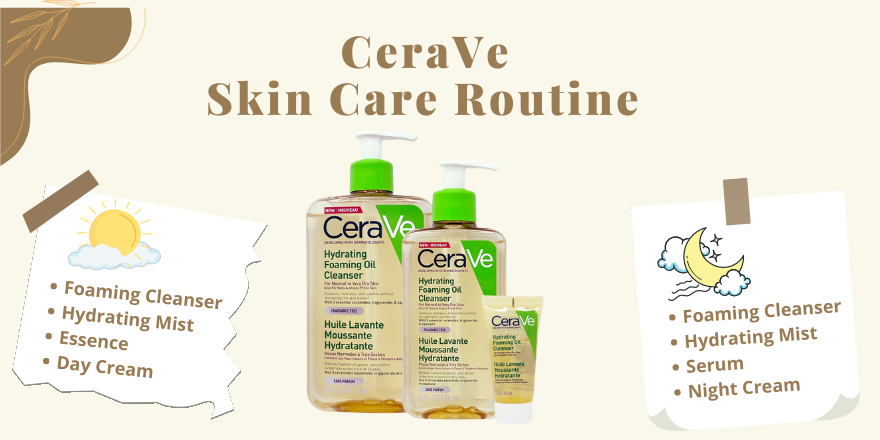Benefits of AHA and BHA in Skincare
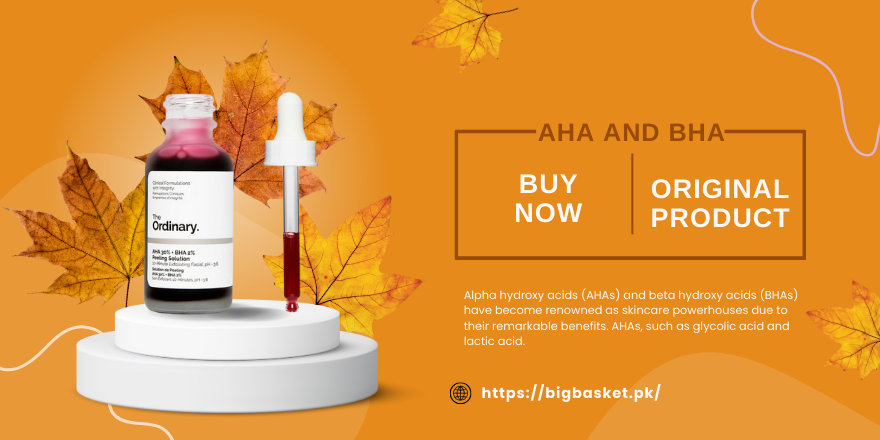
Benefits of AHA and BHA in Skincare Alpha hydroxy acids (AHAs) and beta hydroxy acids (BHAs) have become renowned as skincare powerhouses due to their remarkable benefits. AHAs, such as glycolic acid and lactic acid, work by exfoliating the skin’s surface, revealing a smoother and more radiant complexion. They effectively remove dead skin cells, unclog pores, and help to diminish fine lines and wrinkles.
BHAs, on the other hand, such as salicylic acid, penetrate deep into the pores, making them particularly effective for acne-prone and oily skin types. They help to dissolve excess oil, reduce inflammation, and prevent future breakouts. Incorporating products with AHA and BHA into your skincare routine can lead to significant improvements in skin texture, tone, and overall appearance.
Chemical exfoliation for smoother skin
Chemical exfoliation has emerged as a highly effective method for achieving smoother and more youthful-looking skin. By utilizing the power of carefully formulated AHA and BHA products, individuals can experience remarkable transformations in their skin’s texture and appearance. The exfoliating properties of AHAs work to gently slough off dead skin cells, promoting cell turnover and revealing a fresh, radiant complexion.
BHAs, on the other hand, penetrate deep into the pores, effectively unclogging them and reducing the appearance of blemishes and blackheads. Incorporating chemical exfoliation into your skincare routine can lead to noticeable improvements in skin smoothness, evenness, and overall clarity. With regular use, the transformative benefits of chemical exfoliation can help you achieve the smooth, glowing skin you’ve always desired.
Fighting acne with BHA treatment
BHA treatment has proven to be a powerful and effective solution for combating acne. Beta hydroxy acid, or BHA, is a chemical compound that works wonders in clearing clogged pores and reducing inflammation associated with acne breakouts. Unlike AHAs, which primarily address surface-level exfoliation, BHAs have the unique ability to penetrate deep into the pores, dissolving excess oil and debris that can contribute to acne formation.
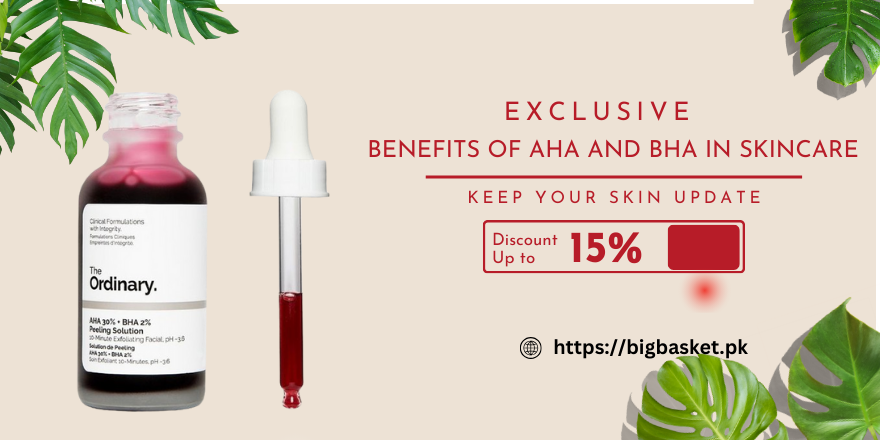
By effectively unclogging pores and reducing the production of sebum, BHA treatment helps to prevent the development of new acne lesions while also minimizing the appearance of existing blemishes. The anti-inflammatory properties of BHAs further aid in reducing redness and swelling, promoting a calmer and more balanced complexion. By incorporating BHA treatment into your skincare regimen, you can effectively target and combat acne, resulting in clearer, healthier, and more radiant skin.
Brighten and even skin tone
To achieve a bright and even skin tone, it is essential to address underlying factors such as hyperpigmentation, sun damage, and uneven skin texture. A combination of skincare ingredients and treatments can help in this process. Vitamin C, for example, is a powerful antioxidant that not only brightens the skin but also helps to fade dark spots and even out skin tone. It inhibits the production of melanin, the pigment responsible for dark spots, resulting in a more radiant complexion.
Additionally, ingredients like niacinamide and licorice extract can help to reduce the appearance of hyperpigmentation and promote a more balanced skin tone. When choosing skincare products, look for these key ingredients and incorporate them into your routine to achieve a brighter, more even complexion. Consulting with a skin care professional can also provide personalized recommendations and treatment options to effectively address your specific skin concerns.
AHA and BHA: Understanding chemical exfoliants
When it comes to achieving smooth and radiant skin, chemical exfoliants like AHA (alpha hydroxy acids) and BHA (beta hydroxy acids) have become popular choices in skincare routines. These potent ingredients work by gently breaking down the bonds between dead skin cells, allowing them to be easily sloughed off, revealing a fresher and more youthful complexion beneath.
AHA, such as glycolic acid and lactic acid, are water-soluble and primarily target the surface layer of the skin, making them effective for improving texture and diminishing the appearance of fine lines and wrinkles. On the other hand, BHA, notably salicylic acid, is oil-soluble and can penetrate deep into the pores, making it an ideal choice for addressing acne-prone and congested skin.
Understanding the differences between AHA and BHA is crucial in determining which one is right for you based on your specific skincare concerns and skin type.
Choosing the best type for your skin
Finding the best type of chemical exfoliant for your skin requires a careful assessment of your individual needs and concerns. Consider your specific skin type, such as dry, oily, or sensitive, as well as any existing skin conditions you may have, such as acne or rosacea. For those with dry or sensitive skin, it is generally recommended to start with a lower concentration of AHA, like lactic acid, to minimize the risk of irritation.
On the other hand, individuals with oily or acne-prone skin may benefit from the oil-soluble properties of BHA, such as salicylic acid, which can effectively penetrate the pores and help reduce breakouts. It’s important to remember that everyone’s skin is unique, so it may take some trial and error to find the perfect match for your skin.
Consulting with a dermatologist or skincare professional can also provide valuable insight and guidance in selecting the best chemical exfoliant for your skin type. By choosing the right type of chemical exfoliant, you can effectively target your specific skincare concerns and achieve a healthier, more radiant complexion.
Incorporating AHA/BHA into your routine.
When incorporating AHA/BHA into your skincare routine, it is important to start slowly and gradually increase usage to allow your skin to adjust. Begin by using a product containing AHA or BHA once or twice a week, preferably in the evening, and observe how your skin reacts. If there is no irritation or redness, you can gradually increase the frequency of use.
It is recommended to follow the instructions provided by the product manufacturer or seek guidance from a skincare professional. Additionally, it is crucial to always wear sunscreen during the day when using chemical exfoliants, as they can increase skin sensitivity to the sun.
By incorporating AHA/BHA into your routine with caution and consistency, you can experience the benefits of these exfoliants, such as improved skin texture, reduced acne breakouts, and a more radiant complexion.
AHA: A powerhouse for radiant skin.
Alpha hydroxy acids (AHAs) have long been recognized as a powerful ingredient in skincare products for their ability to enhance skin texture and tone. With their exfoliating properties, AHAs work by gently removing dead skin cells, unclogging pores, and promoting cell turnover, resulting in a smoother and more even complexion.
AHAs, such as glycolic acid and lactic acid, also stimulate collagen production, leading to firmer, plumper skin over time. In addition to their exfoliating and anti-aging benefits, AHAs can also help reduce the appearance of dark spots and hyperpigmentation, giving the skin a brighter and more radiant appearance. Incorporating AHA products into your skincare routine can effectively address various skin concerns and contribute to a healthier, more youthful complexion.
Unveiling the science behind AHA.
The effectiveness of alpha hydroxy acids (AHAs) in improving skin texture and tone can be attributed to their unique scientific properties. AHAs work by penetrating the outer layer of the skin, known as the epidermis, and loosening the bonds between dead skin cells. This gentle exfoliation process helps to remove the buildup of dull and damaged skin cells, revealing a smoother and more radiant complexion.
AHAs also stimulate the production of collagen and elastin, proteins responsible for the skin’s elasticity and firmness, which can help reduce the appearance of fine lines and wrinkles. Furthermore, AHAs can regulate the production of melanin, the pigment responsible for dark spots and hyperpigmentation, leading to a more even and bright skin tone.
By understanding the science behind AHAs, skincare enthusiasts can make informed decisions when incorporating these powerful ingredients into their beauty routines, reaping the numerous benefits they offer for healthier and more youthful-looking skin.
Transform your skin with AHA.
AHAs have revolutionized the skincare industry with their remarkable ability to transform the skin. Incorporating products with AHA into your skincare routine can lead to a multitude of benefits. These powerful acids effectively exfoliate the skin, removing dead skin cells and revealing a smoother and more youthful complexion.
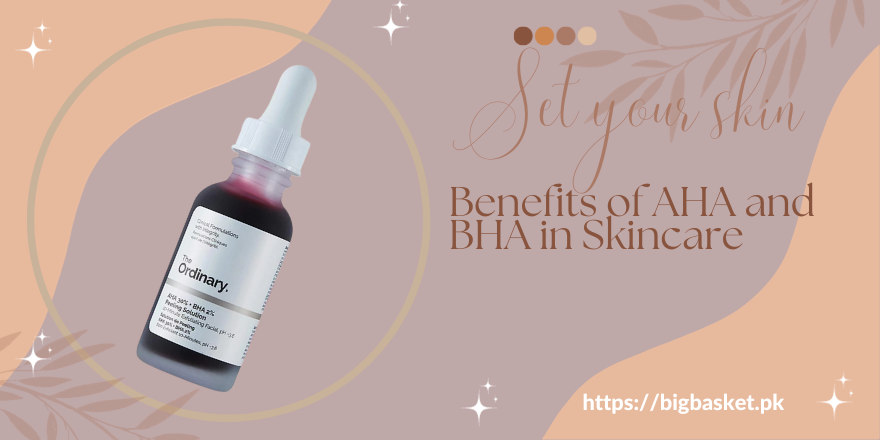
By promoting collagen and elastin production, AHAs also help to improve the skin’s elasticity and firmness, reducing the appearance of fine lines and wrinkles. Additionally, AHAs have the remarkable ability to regulate melanin production, leading to a more even skin tone and diminished hyperpigmentation. With consistent use, AHA-infused products can truly revolutionize your skin, leaving you with a radiant and flawless complexion.
Effective acne treatment and prevention.
Acne can be a persistent and frustrating skin condition that affects people of all ages. However, there are effective treatment and prevention methods available to help combat this issue. One approach that has shown promising results is the use of Beta Hydroxy Acid (BHA) in skincare. BHA, particularly in the form of salicylic acid, works to exfoliate the skin and penetrate deep into the pores, effectively unclogging them and preventing future breakouts.
It also has anti-inflammatory properties, reducing redness and inflammation associated with acne. By incorporating BHA-based products into a consistent skincare routine, individuals can experience clearer, healthier skin and significantly reduce the occurrence of acne breakouts.
Pore-decongesting properties for clear skin.
Pore-decongesting properties are essential for achieving clear and healthy skin. Regular use of skin care products containing ingredients like salicylic acid, a type of BHA, can effectively target clogged pores and prevent acne breakouts. Salicylic acid has the unique ability to penetrate deep into the pores, dissolving excess oil, dirt, and dead skin cells that can accumulate and clog them.
This exfoliating action not only helps to unclog pores but also promotes cell turnover, resulting in a smoother and more refined complexion. By incorporating BHA-based products into your skincare routine, you can effectively decongest your pores, minimize their appearance, and maintain clear, radiant skin.
Boosting cell turnover for a healthier complexion.
To achieve a healthier complexion, it is crucial to prioritize boosting cell turnover. Cell turnover refers to the natural process of shedding dead skin cells and replacing them with new ones. This process tends to slow down as we age, resulting in a dull and lackluster complexion. By incorporating skincare products that promote cell turnover, such as those containing alpha hydroxy acids (AHAs) or retinol, you can effectively stimulate the production of new, healthy skin cells.
These ingredients work by exfoliating the top layer of the skin, removing dead cells, and revealing fresher, more youthful skin underneath. Additionally, increased cell turnover can help minimize the appearance of fine lines, wrinkles, and hyperpigmentation, leading to a smoother, more radiant complexion. By incorporating products that boost cell turnover into your skincare routine, you can achieve a healthier and more youthful-looking complexion.
AHA for glowing, youthful skin.
Alpha hydroxy acids (AHAs) have gained immense popularity in the skincare industry for their ability to promote glowing and youthful skin. AHAs work by exfoliating the top layer of the skin, removing dead cells, and stimulating the production of new, healthier skin cells. This results in a brighter complexion, improved texture, and reduced signs of aging such as fine lines and wrinkles. Incorporating AHAs into your skincare routine can be highly beneficial, but it is important to know when and how often to use them.
AHAs are typically used in the evening as they can increase sensitivity to the sun. It is recommended to start with a lower concentration of AHA and gradually increase as your skin builds tolerance. Frequency of use will vary depending on the individual’s skin type and sensitivity, but starting with 1-2 times per week and gradually increasing to every other day or daily can provide optimal results. It is always important to listen to your skin and adjust accordingly to avoid over-exfoliation or irritation.
Timing is key for AHA.
Timing is key for AHA. When incorporating AHA into your skincare routine, it is crucial to consider the timing of application. Ideally, AHAs should be used at night to minimize the risk of sun sensitivity. This is because AHAs can increase the skin’s vulnerability to UV rays, which can lead to sunburn and other forms of sun damage.
By applying AHAs at night, you allow your skin to fully absorb the product and maximize its exfoliating and rejuvenating effects. Additionally, it is important to note that consistency is key when using AHAs. While the frequency of use may vary depending on individual skin type and tolerance, it is generally recommended to start with 1-2 times per week and gradually increase as your skin builds tolerance.
It is essential to listen to your skin and adjust the frequency accordingly to avoid any potential irritation or over-exfoliation. By carefully considering the timing and frequency of AHA use, you can effectively incorporate this powerful ingredient into your skincare routine and achieve the desired results.
Use AHA sparingly for effectiveness.
To optimize the effectiveness of AHA in your skincare routine, it is advisable to use it sparingly. AHA, or alpha hydroxy acid, is a potent exfoliating agent that helps to remove dead skin cells, promote cell turnover, and improve overall skin texture and appearance. However, excessive use of AHA can lead to skin irritation, dryness, and sensitivity.
It is recommended to start with a low concentration of AHA and gradually increase as your skin adjusts. Using AHA sparingly, such as 1-2 times per week, allows your skin to reap the benefits without overwhelming it. Additionally, it is important to always follow up with a broad-spectrum sunscreen during the day to protect your skin from potential sun damage. By using AHA judiciously, you can harness its effectiveness while minimizing any potential adverse effects.
BHA is a powerful exfoliant.
One of the key reasons why BHA (beta hydroxy acid) has gained popularity in the skincare community is its remarkable exfoliating properties. BHA, commonly found as salicylic acid in skin care products, effectively penetrates the skin’s surface and unclogs pores by breaking down the bonds between dead skin cells.
This gentle yet powerful exfoliation not only helps to eliminate acne-causing bacteria but also reduces blackheads and whiteheads. By promoting cellular turnover, BHA can reveal fresher, smoother skin while reducing the appearance of blemishes and uneven texture. When incorporated into a skincare routine, BHA can be a valuable tool in achieving clearer and more refined skin.
Use BHA 2-3 times weekly.
To maximize the benefits of BHA in your skincare routine, it is recommended to use it 2-3 times weekly. This frequency strikes a balance between reaping the exfoliating advantages of BHA and allowing your skin enough time to recover and regenerate.
Overuse of BHA can potentially lead to dryness, sensitivity, or irritation, so it is essential to follow the recommended usage guidelines. Begin by incorporating BHA into your routine once a week and gradually increase the frequency as your skin adjusts.
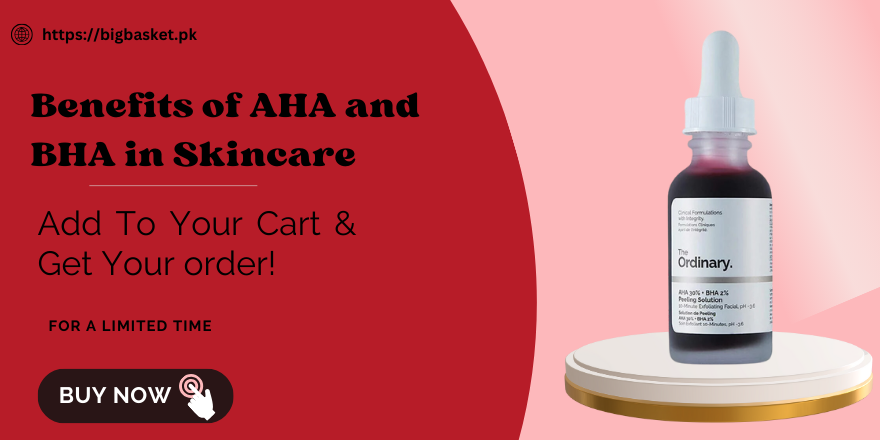
Remember to apply it to clean, dry skin and allow it to fully absorb before proceeding with the rest of your skincare products. By incorporating BHA into your routine 2-3 times weekly, you can effectively maintain the clarity and smoothness of your skin while minimizing the risk of overexfoliation.
Start with lower concentration first.
When incorporating BHA into your skincare routine, it is advisable to start with a lower concentration first. This approach allows your skin to acclimate to the exfoliating effects of BHA without overwhelming it.
Beginning with a lower concentration minimizes the risk of potential sensitivity or irritation, especially if you have sensitive or reactive skin. Gradually increasing the concentration of BHA over time, once your skin has adapted and shown no adverse reactions, can help you optimize the benefits of this ingredient.
It is important to note that individual skin types may have varying tolerance levels, so it is crucial to listen to your skin and adjust accordingly. Consulting with a dermatologist or skincare professional can also provide personalized guidance on the best approach for incorporating BHA into your skincare routine.
incorporating BHA into your skincare routine can greatly benefit your skin. It is important to use it at the right time and frequency to avoid any potential irritation or negative reactions. As always, it is best to consult with a dermatologist before adding any new product to your routine.
With proper usage and consistent application, BHA can help improve the appearance and health of your skin. Remember to always patch test and introduce new products slowly to find the best approach for your skin.
FAQ’s
What are AHA and BHA, and how do they differ in skincare?
AHA stands for Alpha Hydroxy Acid, while BHA stands for Beta Hydroxy Acid. AHAs are water-soluble acids derived from fruits or milk, while BHAs are oil-soluble acids primarily sourced from willow tree bark. They differ in their molecular structures and target different skin issues.
What benefits do AHAs and BHAs offer for the skin?
Both AHAs and BHAs provide multiple benefits, including exfoliation to remove dead skin cells, unclogging pores to reduce acne, improving skin texture, brightening the complexion, and regulating oil production for a balanced skin appearance.
How do AHAs and BHAs help with exfoliation and improving skin texture?
AHAs and BHAs work by loosening the bonds between dead skin cells, facilitating their removal and promoting cell turnover. This process results in smoother skin texture, reduced appearance of fine lines and wrinkles, and a more radiant complexion.
Can AHAs and BHAs address specific skin concerns like acne or uneven skin tone?
Yes, BHAs, particularly salicylic acid, penetrate deeply into pores, effectively clearing them and reducing acne, blackheads, and whiteheads. AHAs, on the other hand, target hyperpigmentation and uneven skin tone, resulting in a more balanced complexion.
Who can benefit from incorporating AHAs and BHAs into their skincare routine?
Individuals with concerns such as acne-prone skin, signs of aging like fine lines and wrinkles, dull or uneven skin tone, or excessive oiliness can benefit from including AHAs and BHAs in their skincare regimen.
Are there any potential side effects or precautions to consider when using AHAs and BHAs?
Yes, possible side effects may include skin irritation, redness, dryness, or increased sensitivity to the sun. It’s advisable to start with lower concentrations, perform patch tests, and use sunscreen daily to mitigate these effects.
How should AHAs and BHAs be incorporated into a skincare routine for optimal results?
Start gradually, introducing AHAs or BHAs a few times a week and gradually increasing frequency as your skin adjusts. Always follow the instructions provided with the product and use sunscreen daily to protect your skin from increased sun sensitivity.
Can AHAs and BHAs be used together with other skincare products?
While combining AHAs and BHAs with other products is possible, it’s important to avoid over-exfoliating the skin. Always monitor how your skin responds and consider consulting a dermatologist to create a suitable skincare routine.
No products found







